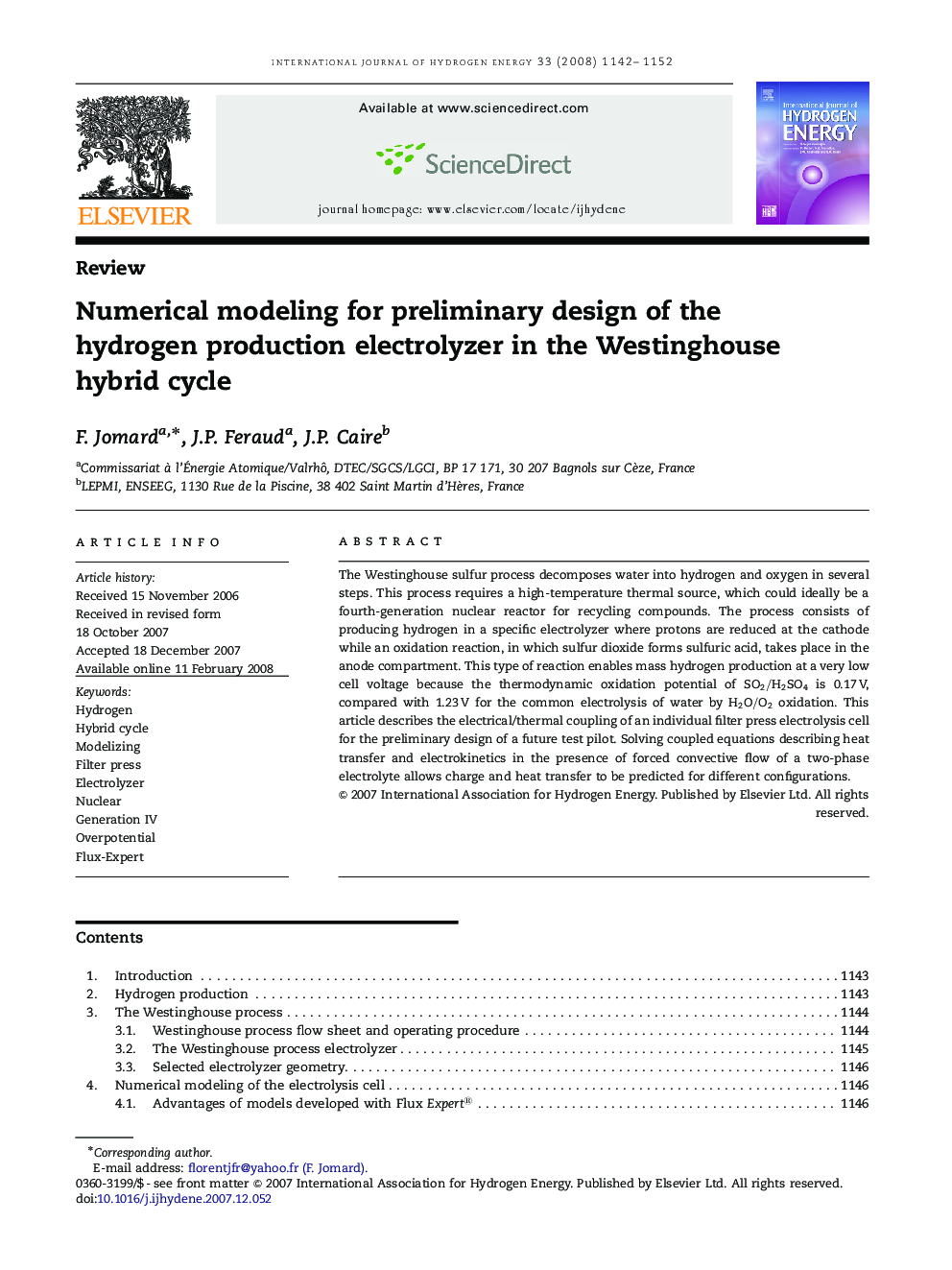| Article ID | Journal | Published Year | Pages | File Type |
|---|---|---|---|---|
| 1274688 | International Journal of Hydrogen Energy | 2008 | 11 Pages |
The Westinghouse sulfur process decomposes water into hydrogen and oxygen in several steps. This process requires a high-temperature thermal source, which could ideally be a fourth-generation nuclear reactor for recycling compounds. The process consists of producing hydrogen in a specific electrolyzer where protons are reduced at the cathode while an oxidation reaction, in which sulfur dioxide forms sulfuric acid, takes place in the anode compartment. This type of reaction enables mass hydrogen production at a very low cell voltage because the thermodynamic oxidation potential of SO2/H2SO4SO2/H2SO4 is 0.17 V, compared with 1.23 V for the common electrolysis of water by H2O/O2H2O/O2 oxidation. This article describes the electrical/thermal coupling of an individual filter press electrolysis cell for the preliminary design of a future test pilot. Solving coupled equations describing heat transfer and electrokinetics in the presence of forced convective flow of a two-phase electrolyte allows charge and heat transfer to be predicted for different configurations.
